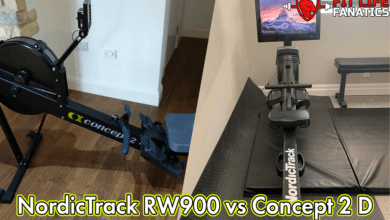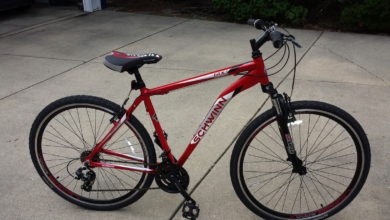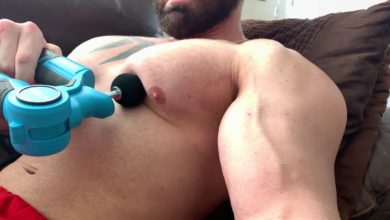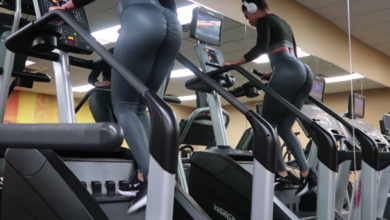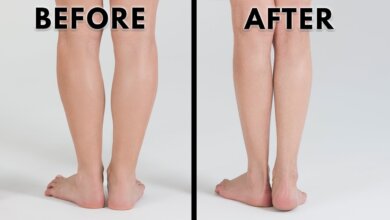Rear Delt Row: How to Do it, Variations, Muscles Worked, Benefits, Alternative Exercises
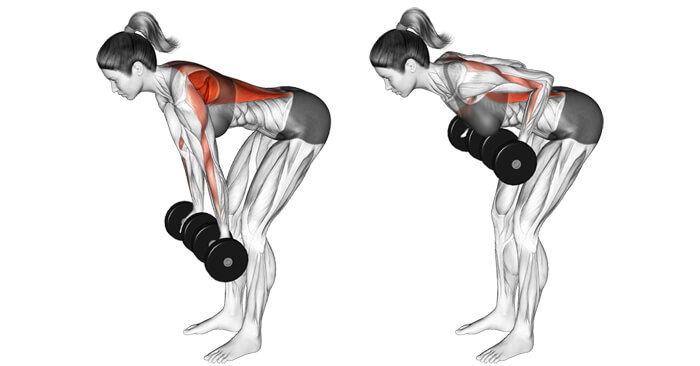
In this article we will be covering the Rear Delt Row exercise in it’s entirety.
This will include:
- What is the rear delt row?
- How to Do it, correctly.
- Variations of this exercise.
- Muscles worked.
- Benefits of the rear delt row.
- Alternative exercises.
What Is The Rear Delt Row?
The rear delt row is a simple exercise that targets many areas in the body; Your back, shoulders, and arms are all worked in this exercise. It has many variations and we will be discussing three of them in detail (the seated dumbbell rear delt row, the standing barbell rear delt row, and the standing cable rear delt row) in this article.
But lets first discuss the regular rear delt row and how to perform it step-by-step.
How To Perform The Rear Delt Row Step-By-Step
Listed below are the steps to perform this exercise correctly.
Step 1
Stand upright and hold two dumbbells in both of your hands with a neutral grip, then lean forward with your upper-body about 45 degrees.
Step 2
Bend your knees a little bit and lift the weights up to the middle of your chest.
Step 3
Now go back to your original position repeat that pattern for the desired number of repetitions.
Like this video
Video Illustration of The Rear Delt Row
As you can see, it is pretty easy to perform and a beginner-friendly exercise.
You should do this exercise in the form of 2 to 3 sets each with 8 to 12 repetitions. This means you repeat the pattern we mentioned above for 8 to 12 times (that is one set), then you rest for 45 seconds to a minute and a half and repeat for another set and so on until you reach the desired sets.
You can also decide to go with single set training, although this isn’t advisable for rookies. But even for seasoned gym rats, I wouldn’t recommend doing 1 set to failure every day. At least start with one set to failure 3 times a week to get your muscles used to the demands of this routine.
Rear Delt Row Variations
With slight modifications and additions, you can get a plethora of variations of this exercise.
There are three main variations of the rear delt row exercise. The seated dumbbell rear delt row, the standing barbell rear delt row, and the standing cable rear delt row. Now we are going to be discussing them in detail and how to perform each one step-by-step.
1. The Seated Dumbbell Rear Delt Row
In the first variation we have, you will need a bench (even a small adjustable weight bench should work if you’re not very tall), and a pair of dumbbells – if you look at the right places for dumbbells, you should be able to find budget dumbbell sets that won’t cost you a fortune. And for the ladies, there are some women’s dumbbell models, too.
You are going to perform a very similar movement to the regular exercise but sitting down.
Here are the detailed steps to do this variation
Step 1
Sit at the end of the bench and grab two dumbbells with each hand.
Step 2
Lean forward and stretch your arms toward the ground while keeping your legs closed.
Step 3
Lift the weights just as you would in the regular rear delt row that we discussed above.
Step 4
Repeat that pattern for the required number of reps
Like this Video
Video Illustration Of The Seated Dumbbell Rear Delt Row
As you can see It’s similar to the regular variation of the exercise but sitting down. You should ideally perform this variation in the form of 3 to 4 sets each with 8 to 12 reps.
2. The Standing Barbell Rear Delt Row
In the second variation we have, you will need a barbell; this can be a short barbell or the standard one depending on how short (or tall) you are, how much clearance you have, and the weight of the bar that you are comfortable with.
You pretty much copy the regular rear delt row but instead of using dumbbells, you use a barbell.
Here is how to perform this variation
Step 1
Just as the regular exercise, stand up straight and hold the barbell with a neutral grip.
Step 2
Bend your upper body forward, about 90 degrees, bend your knees slightly, and push your rear backward.
Step 3
Lift the barbell until it reaches your chest and then slowly move it downwards.
Step 4
Repeat this movement pattern for the desired number of reps.
Like this illustration
Video Illustration Of The Standing Barbell Rear Delt Row
https://www.youtube.com/watch?v=PkhN_YyoWLI
3. The Standing Cable Rear Delt Row / Face Pulls
The third and final variation we have is the standing cable rear delt row also known as face pulls. This variation, as the name suggests, uses a cable gym machine (the lat pulldown machine or a power rack with lat pulldown should fit the bill), to work the necessary muscle areas.
Related Readings: What Muscles Do Face Pulls Work?
This exercise is performed as follows
Step 1
Adjust the appropriate weights and attach a rope to the cable machine and adjust it so that it is on a height similar to your shoulders or slightly above.
Step 2
Grab both ends of the rope with your hands and step away from the machine.
Step 3
Pull the rope towards your chest and then slowly let it return back to its original position and then pull again.
Step 4
Repeat this pattern for the desired number of reps.
Same as this video
Video Illustration Of The Cable Rear Delt Row
You would want to perform this exercise in the form of 2 to 3 sets each with 8 to 12 reps.
Muscles Worked By The Rear Delt Row Exercise
Many muscle groups are worked with this exercise. Your shoulder and arms are primarily impacted by this exercise, specifically your delts and your traps.
1. Rear Delts
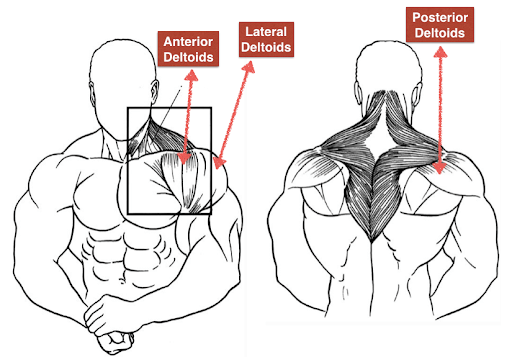
Obviously, your rear delts are significantly impacted by the rear delt row exercise and its variations. The rear delts are part of the deltoid muscle group which forms the rounded contour of the shoulder.
Having well-developed and well-worked rear delts (and delts in general) helps greatly with shoulder mobility which is crucial to having overall body mobility and flexibility.
2. Traps

The trapezius muscle, traps for short, is a muscle located under your neck between your shoulders that helps to stabilize the shoulders, neck, and head areas since it connects all of them.
If you are the type of person who sits all day, almost everybody in the modern world, you are going to have to frequently keep this muscle worked.
Otherwise, you might end up with problems regarding your neck and shoulder mobility.
The pendlay row is the other workout that works the traps effectively.
3. Arms
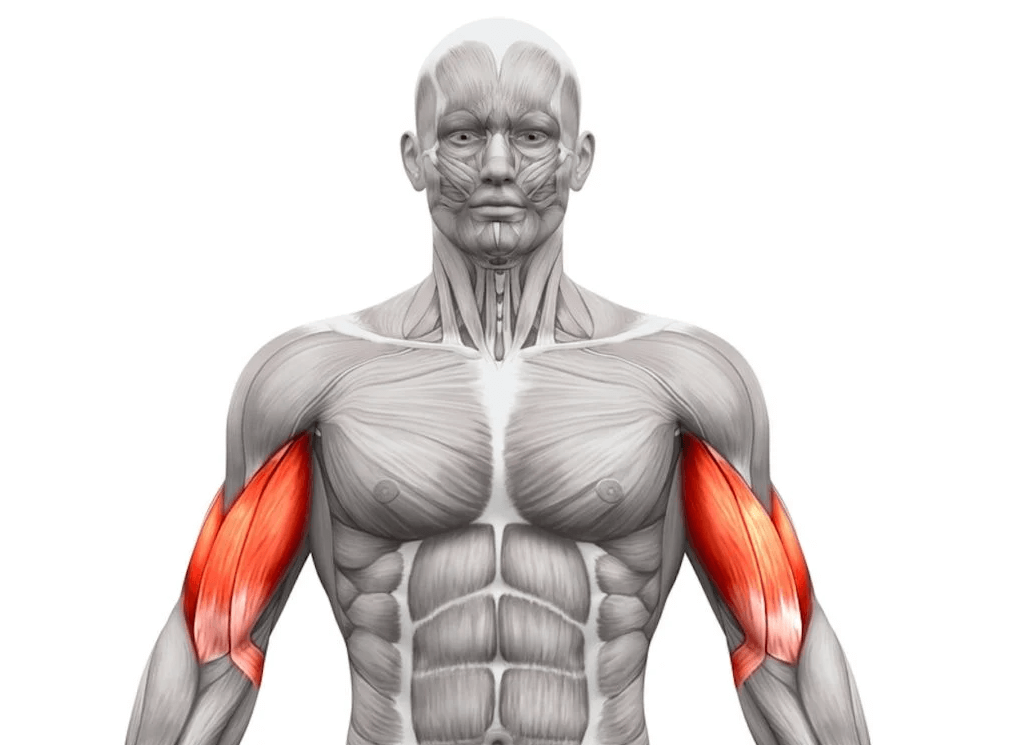
Moving the dumbbell or the barbell – or any other equipment you use during this exercise – will naturally work your arm muscles; specifically your biceps.
If you have skinny arms, then you should consider giving this workout a shot.
Just as the muscle groups we mentioned above having well-developed arms will help greatly with your upper body’s flexibility and give you a more able body overall.
Other exercises that target your arms include low rows, dumbbell floor presses, and more advanced ones like the dumbbell pullover, the seated tricep press, the bench press and chest press.
Related Reading: Biceps Vs Triceps, What are the differences?
Benefits Of Rear Delt Rows
Listed below are the benefits of performing the rear delt row exercise
1. Good For Increasing Definition
Rear delt rows – especially cable rear delt rows – allow you to really focus on the exercise movement and allows you to do lighter weight and more reps to pump as much blood into the muscles as possible. Rear delt rows are an excellent exercise to top off a back workout day.
2. They Help Improve The Posture
Let’s face it, most of us spend the majority of our time during the day sitting for long hours; this hurts our posture and overall limits our body and its physical ability.
This is where the exercises we discussed come in really handy, they help you work a lot of muscle areas that directly affect your posture and reverse some of the negative effects that come with the modern way of living.
Another exercise that helps with posture is wall angels, it’s a great exercise for beginners as well.
Rear Delt Row Alternative Exercises
Working your delts can be done by a variety of exercises; we are going to mention a very popular alternative exercise – the dumbbell rear delt fly – that you can do alongside, or instead of the regular rear delt row.
The Dumbbell Rear Delt Fly
This alternative exercise adds pressure on your chest and back areas in addition to the muscle areas we mentioned previously.
Here are the steps required to do this alternative exercise correctly
Step 1
Grab two dumbbells in both of your hands and sit at the end of a weight bench, keeping both of your arms to your sides.
Step 2
Push your legs together and tuck your hands holding the dumbbells under them. And in doing so you are going to bend your upper body.
Step 3
Lift the weights up from the ground while opening your arms and chest in the process.
Step 4
Repeat that movement for the desired number of reps.
Like this
Video Illustration Of The Dumbbell Rear Delt Fly
You would ideally want to perform the dumbbell rear delt fly in the form of 2 to 3 sets each with 8 to 10 reps
Related Readings;
- Smith Machine Deadlift
- Underhand Dumbbell Row
- Hammer Strength Chest Press
- 11 Best Home Gyms for Bodybuilding
- Shoulder Press Machines
- Ring Rows Alternative Exercises
Sources:
Ben Mayz
Hi there! I'm Ben, main author and chief editor at Fitlifefanatics.com. I have been obsessed with Strength Training and Fitness for 18 years now.
My passion for living a happy fit lifestyle is what made me realize that fitness is what I wanted for my future.
I went on to earn my Masters in Sports Training & Biomechanics.
My passion for Strength training & fitness and my love of helping others is what made me start Fitlifefanatics.
Here, myself, and a team of specialist aim to provide the most accurate, and actionable information possible in hopes to help foster the fitness community forward.
You can learn more about Fitlifefanatics on our About Page
